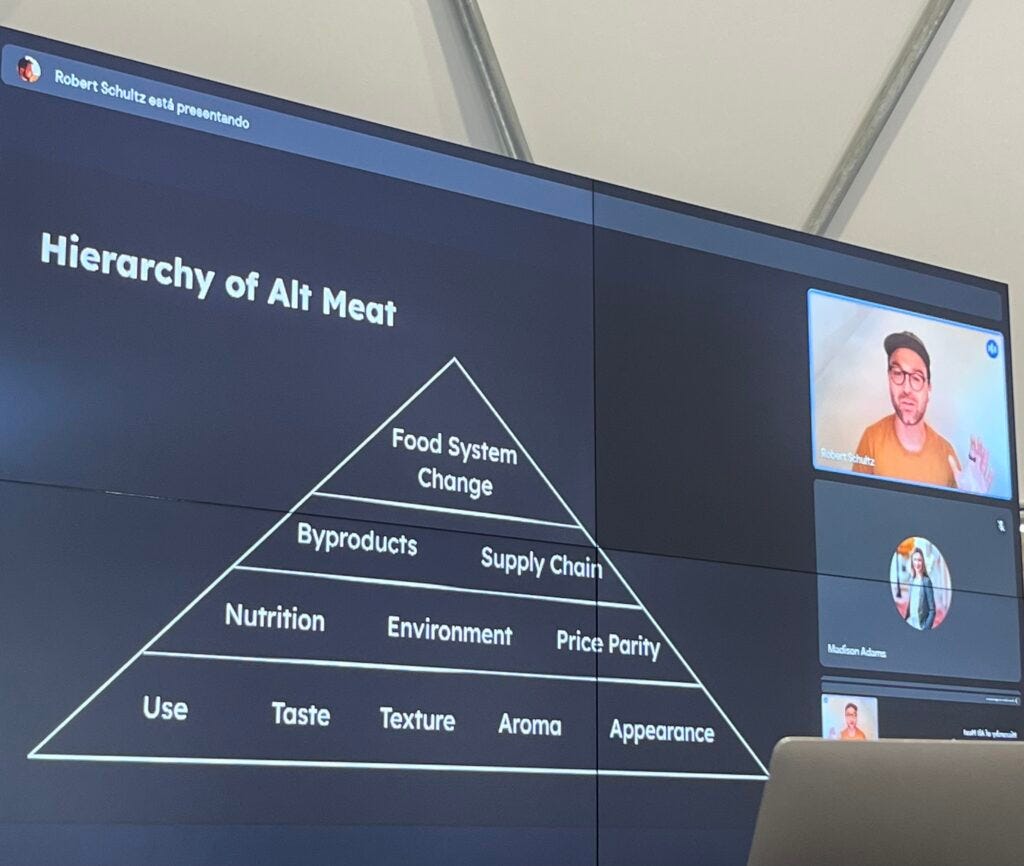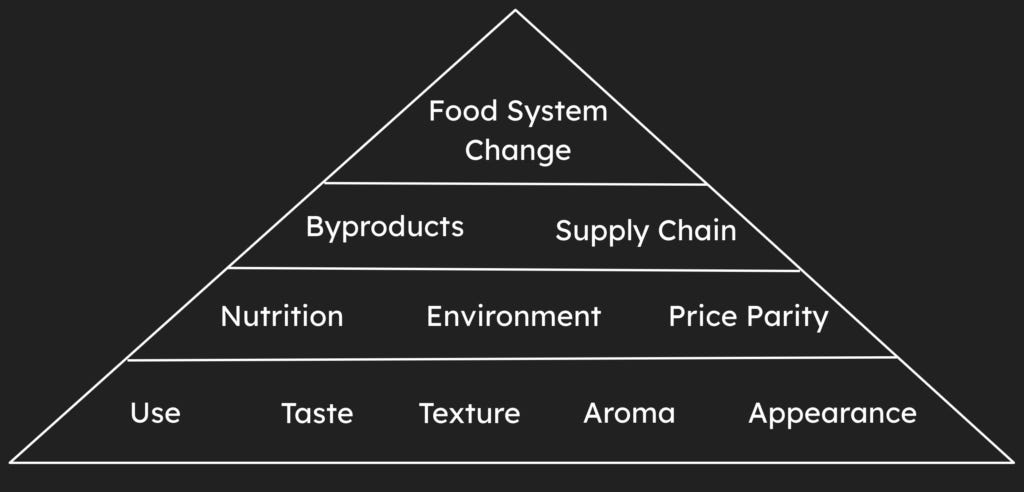how do we change the food system?
Earlier this year, I was asked to speak at Zuzalu in the Longevity portion of the ambitious pop-up. It sounded like a pretty crazy convention of the top 200 leaders and investors in crypto, longevity, AI, and more. I never thought of these folks but as names in headlines, on book covers, and in podcast episodes.
I was given a 24 hour notice on a Wednesday and not feeling particularly up to the task. After a thought-provoking prompt from the summit organizer, I decided that it was a small effort to help align my mindset on one of the primary reasons I studied food in the first place: how do we change the food system? What does a better food system look like? Is it a top-down or bottom-up approach?
I was not in attendance, but called into the Montenegrin virtual city via Zoom to talk about my experience working in food. I initially centered the talk around alternative proteins and how to make meaningful change in this arena, but recognized that it was really true for all sorts of folks: chefs, food product developers, farmers and parents with picky kids.
The concept was based around Maslow’s Hierarchy of Needs, which is a theory of human development psychology. It’s generally portrayed as a pyramid, with basic needs as the base, psychological needs as you grow, and finally, self-fulfillment. It tends to come up in your freshman psychology 101 class and then you keep talking about it as you become a 30-year-old who is looking for a writing outlet…
Anyway, I wanted a model to explain food system change to folks that don’t normally find themselves in classrooms, food seminars, or in the back of house of their favorite restaurants. Alas, the Hierarchy of Needs for Food System Change was wrought into existence. This model is the reason polymorv exists and over the next few weeks, this blog will center around these topics. The order in which we attain these building blocks of the Hierarchy isn’t completely path dependent, but you definitely need them all to enact meaningful change for the long haul.
For now let’s talk about each element and why they’re paramount to transition the products we find on grocery shelves and on our dinner plates.
Level 1: Bare Necessities
Use
When we chat about the use of a product or ingredient, we’re talking about the versatility of it. The reason bread is so useful, for example, is you can use it to make a sandwich, croutons, thicken soups, hold soups, use it as a miso base, or smear your favorite spread on it, just to name a few.
We’ll touch on how to invert your idea of an ingredient or food to make it into something new. To make change, you’ll need ingenuity and creativity.
Taste
This is one of those obvious ones, though I think we can trick ourselves with taste. Taste, and aroma, make up what we as Anglophones call ‘flavor’. Taste is a personal experience, derived from the entirety of all things we’ve consumed, or at least tried before spitting out. If you don’t think about taste, you can’t hope to make an impact.
Aroma
The aforementioned pair to creating flavor, aroma is the element we can modify that is most linked to memory. It is the smell of the creek that wound around your backyard. It is the smell of the meadow you trounced around in on your first date. It’s the feeling you get when you walk into a home with soup on the burner.
Texture
I remember when I was in elementary school, my brother told me that his friend didn’t like ice cream because of the texture. My jaw hit the floor of our 2005 Honda Odyssey and I refused to pick it back up.
Many years on, I recognized how the ‘feel’ of a food in your hands, on your tongue and when you bite into it has a profound effect on enjoyment. To follow the earlier bread analogy, croutons and sourdough change your eating experience if you substitute one for the other in your sandwich.
Appearance
Being red/green color blind (yes, this is a pointilist hellscape to me), color is an element that I leave in the dustbin. But the color, glossiness, and shape make up a ‘visual flavor’ that cannot be disregarded. We’ll dig deep into appearance to make sure you (and I) know why it’s a major key.
Level 2: Human Impact
Nutrition
Food is the source for the building blocks to life. You can get your fat, sugar and protein in any number of ways but it all goes into the front side of your head. I’m not stressing diets here, it’s just important to know what you’re making and how these three elements and more come together. We’ll also learn about how these attributes inform all of the Level 1: Bare Necessities pieces. Not everything you make has to be Soylent.
Environment
Planet Earth. 1.38 billion hectares of arable land for growing crops and raising livestock, and it continues to decrease. What we eat impacts every field and every farmer tending to it. How does your food grow and how does it give or take from the home we all inhabit? Why isn’t this lower on the Hierarchy? Subscribe to find out.
Price Parity
Food prices continue to increase which means we need to make our wallets stretch or our stomachs shrink. What types of things can you do to make food with less money, a bit more effort and still make those tastebuds sing? We will discuss ways to bring this mindset into your kitchen or your next food startup.
Level 3: System Impact
Byproducts
New ingredients and foods can be wasteful because you might be looking for just a protein or a fiber from them and then discarding the rest (or feeding livestock). How can you recapture those scraps and make something novel with them as well? Can you ferment them and turn them into a flavoring? There a few chefs we’ll chat about that are doing amazing things with their byproducts, and I think it’s worth looking into how we can rethink what “waste” is.
Supply Chain
Ew…supply chain? I thought I was reading a blog about food, Bob. Wtf.
We’ll chat about food through a sourcing lens and how your food impacts the people working throughout this supply network. Why are we deforesting the Global South and who wins by doing so? I can’t stress enough how I am also using this blog to learn about these topics as well and hope that folks have input.
Food System Change
So we’ve hit everything on our Hierarchy of Needs — now what? This is the first step towards improving our food system. I know I had said climbing up this pyramid was hard enough, but for it to be the first step seems asinine. The reality is, if this is just one product, you may have only changed a thin slice of the whole. This system needs to be followed and iterated on, even with that first loaf of system-altering bread!
Food system change is not going to be an overnight affair. Our larger financial and agricultural systems wouldn’t hold up to that kind of whiplash alteration. The great thing is that we all get to sort this change out together and we can determine how and what we want the future to look like.

















